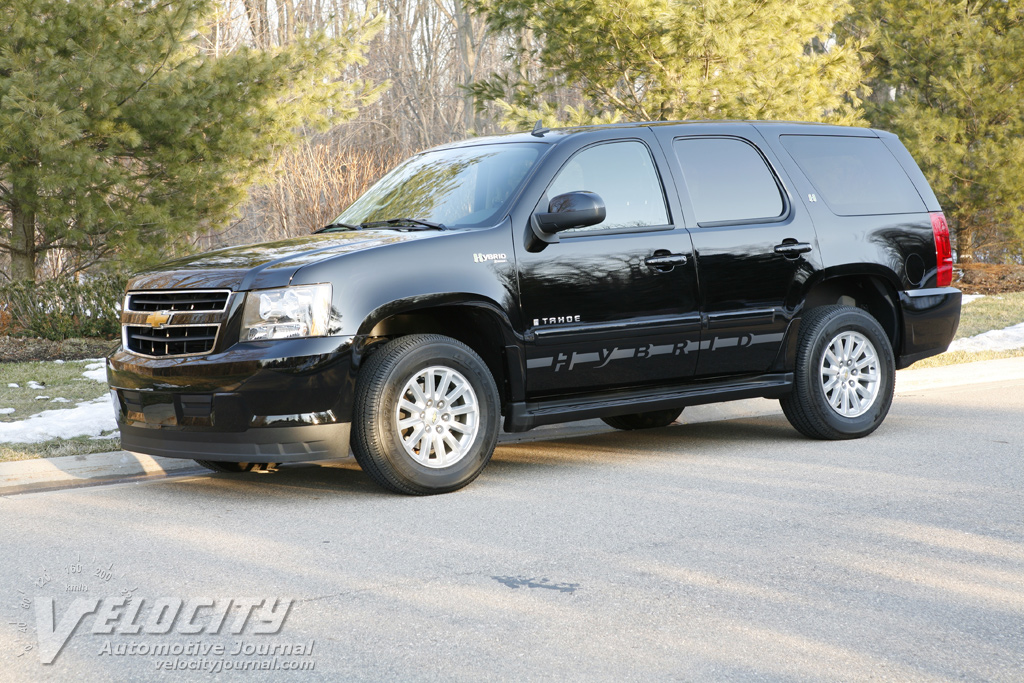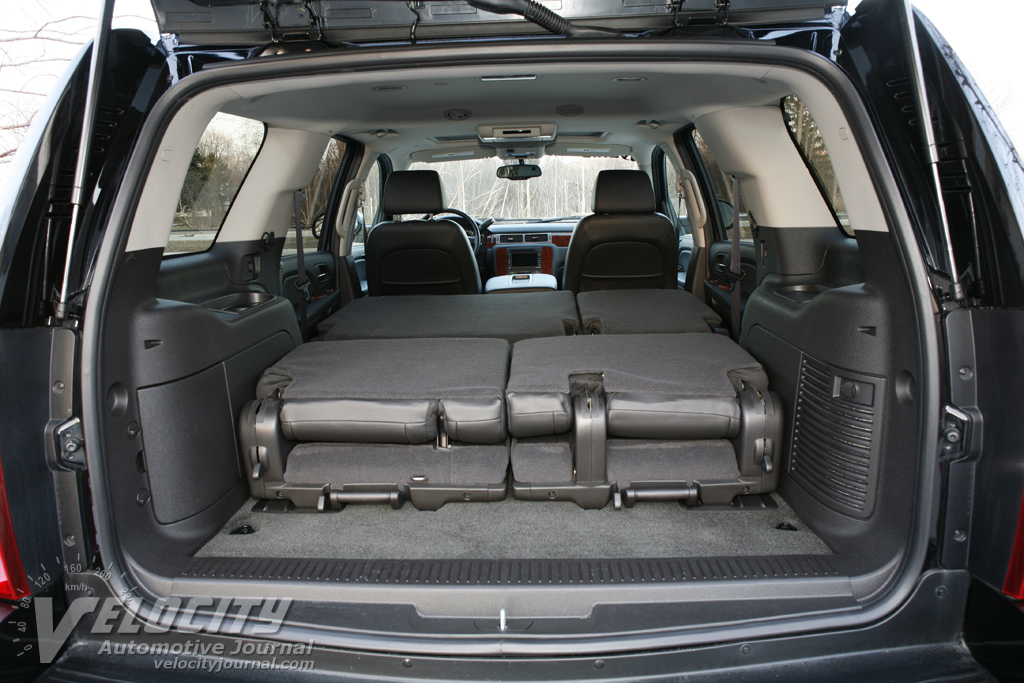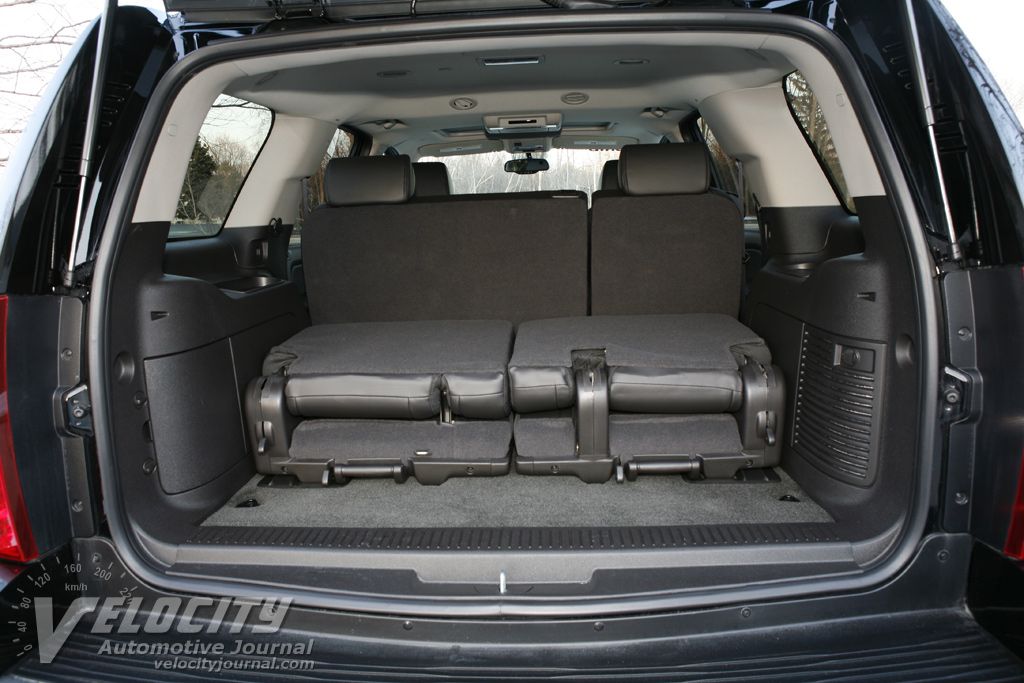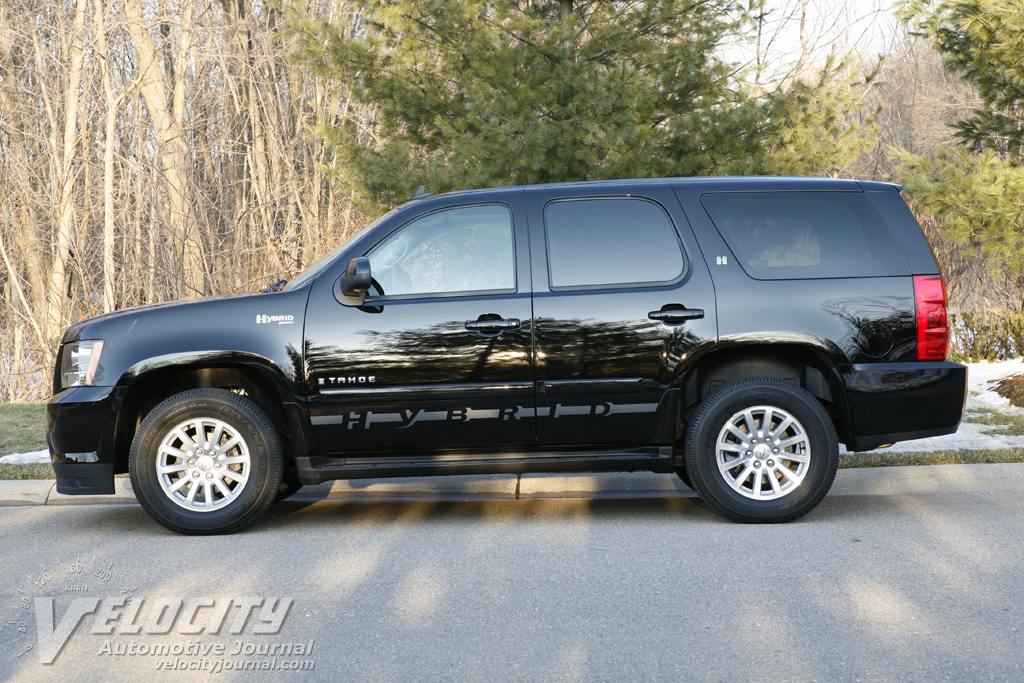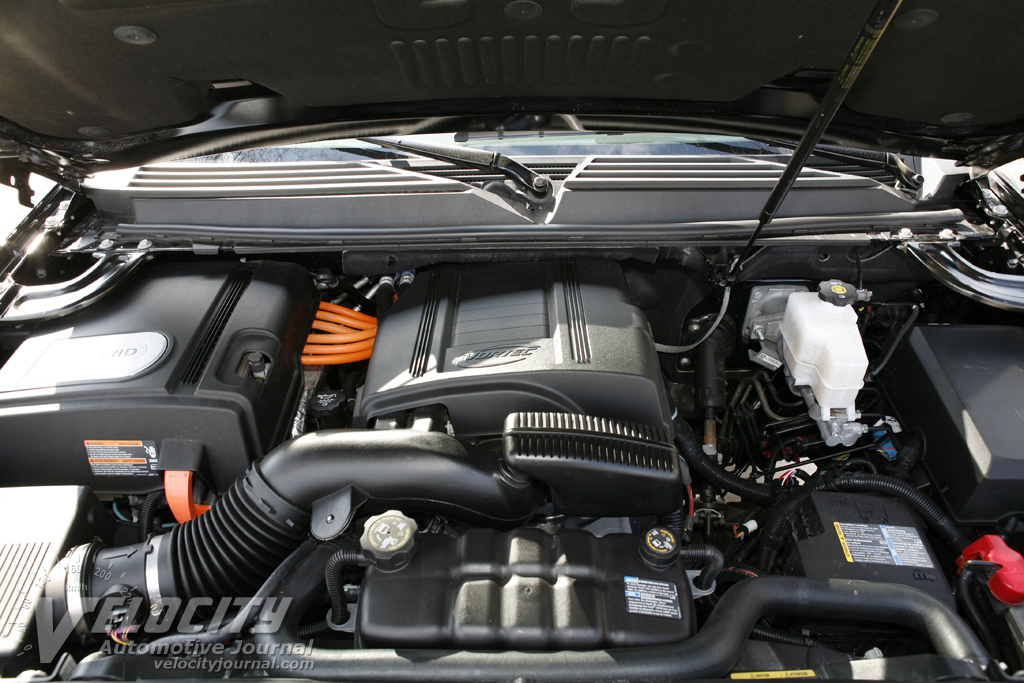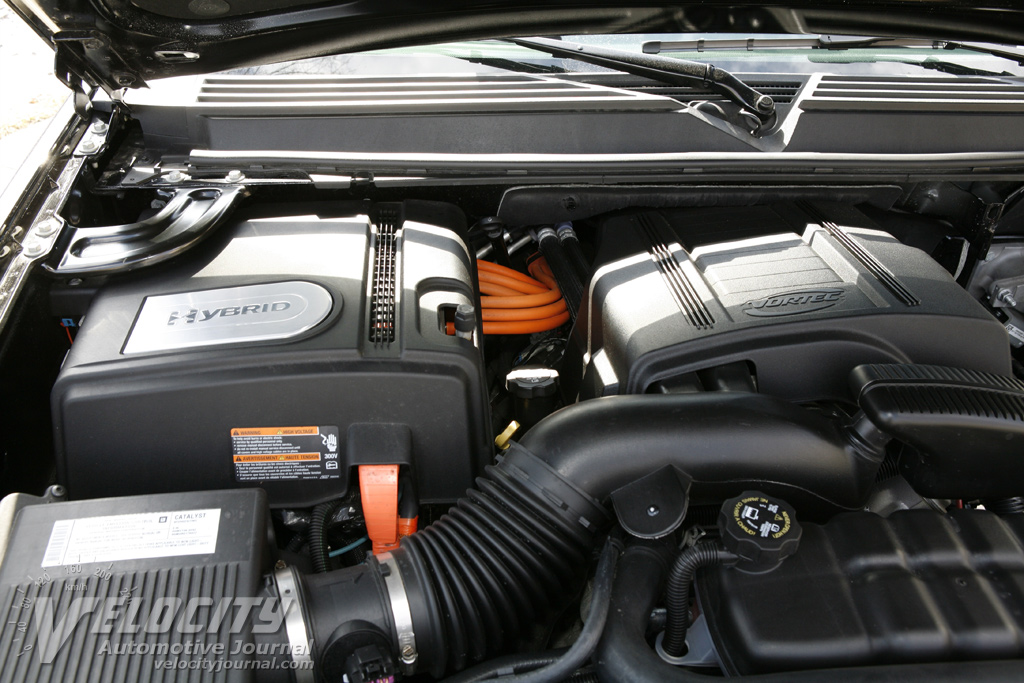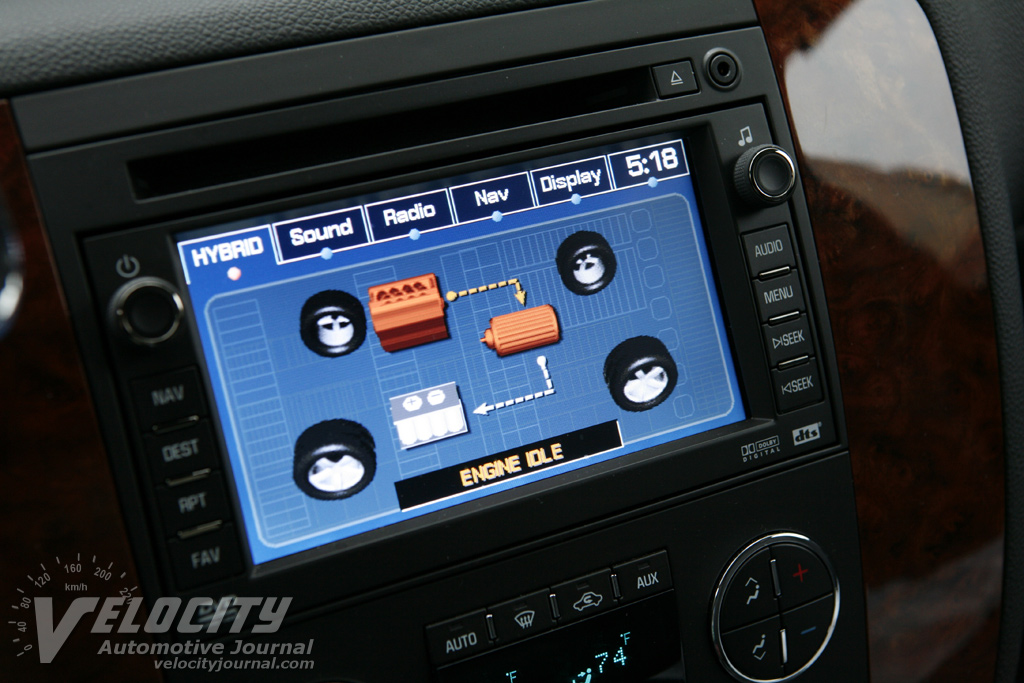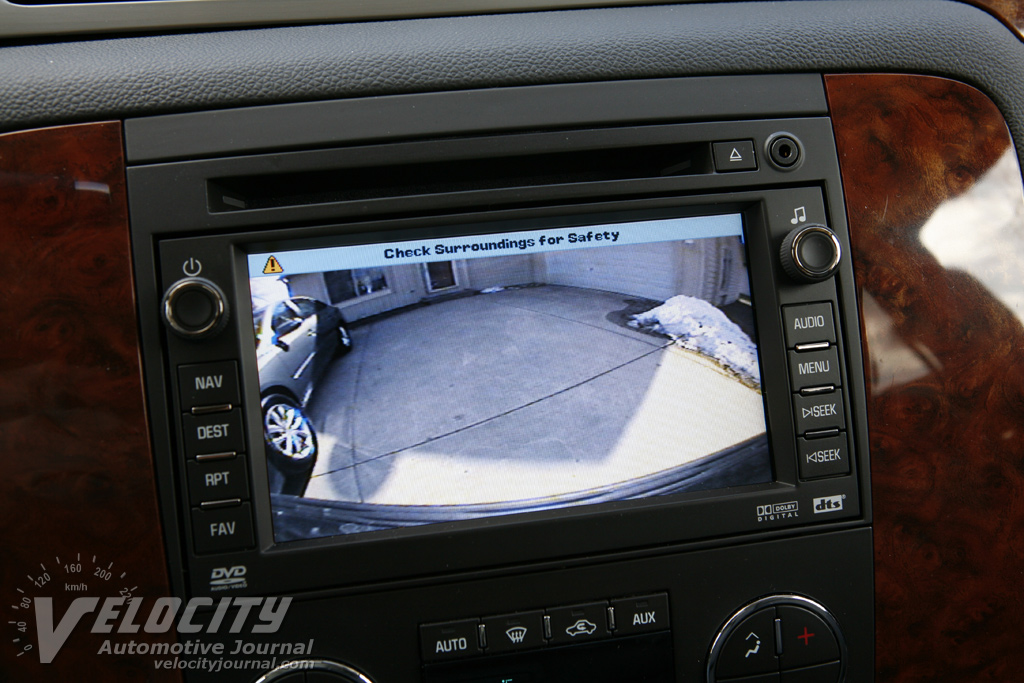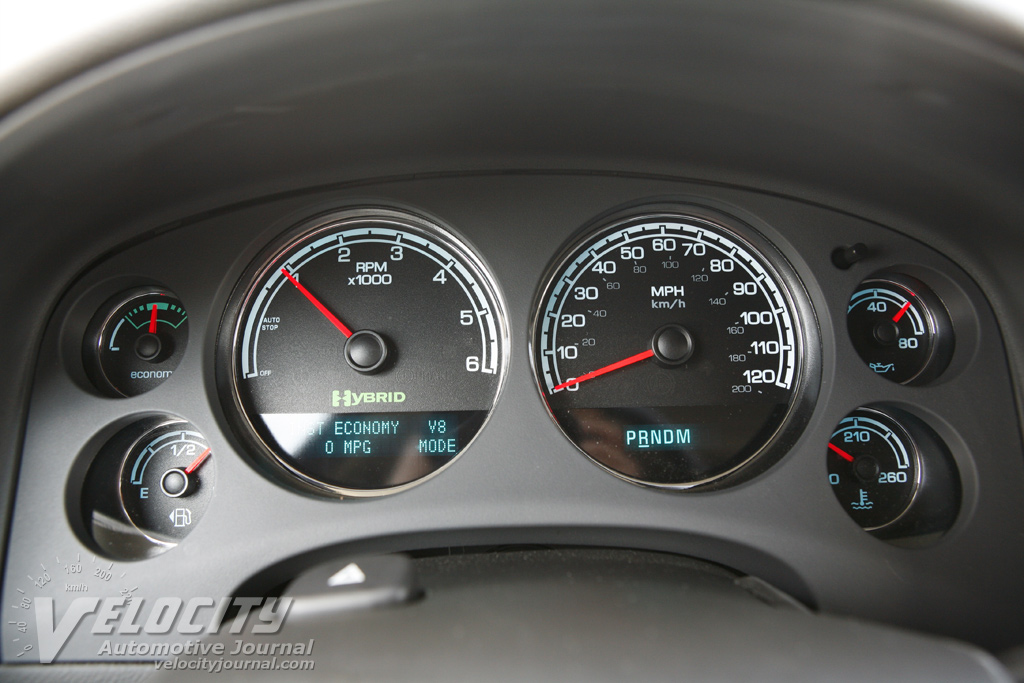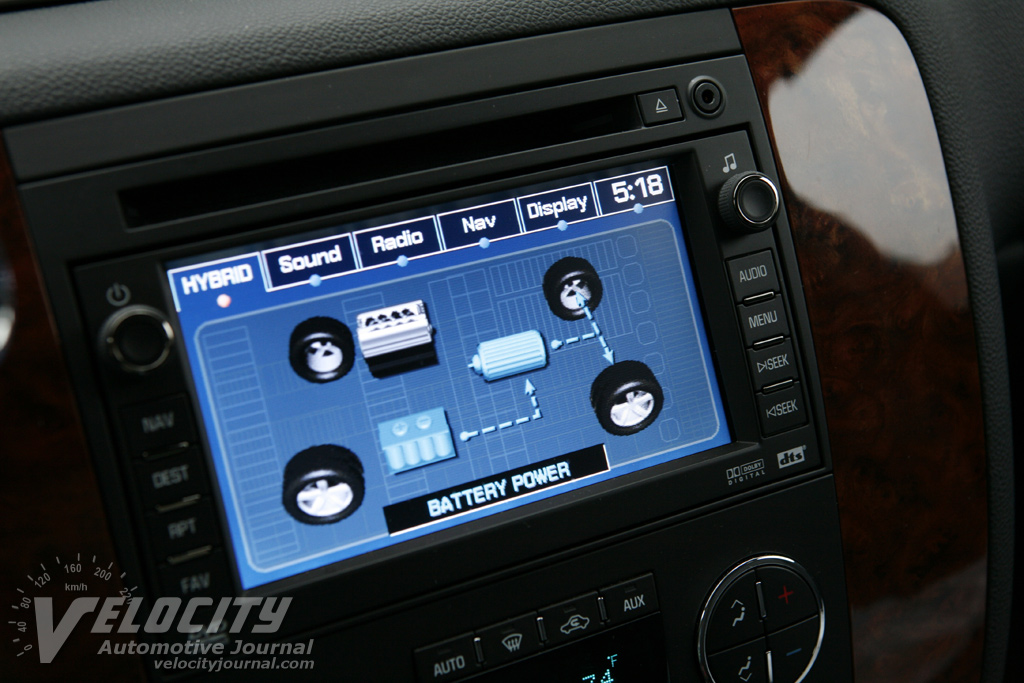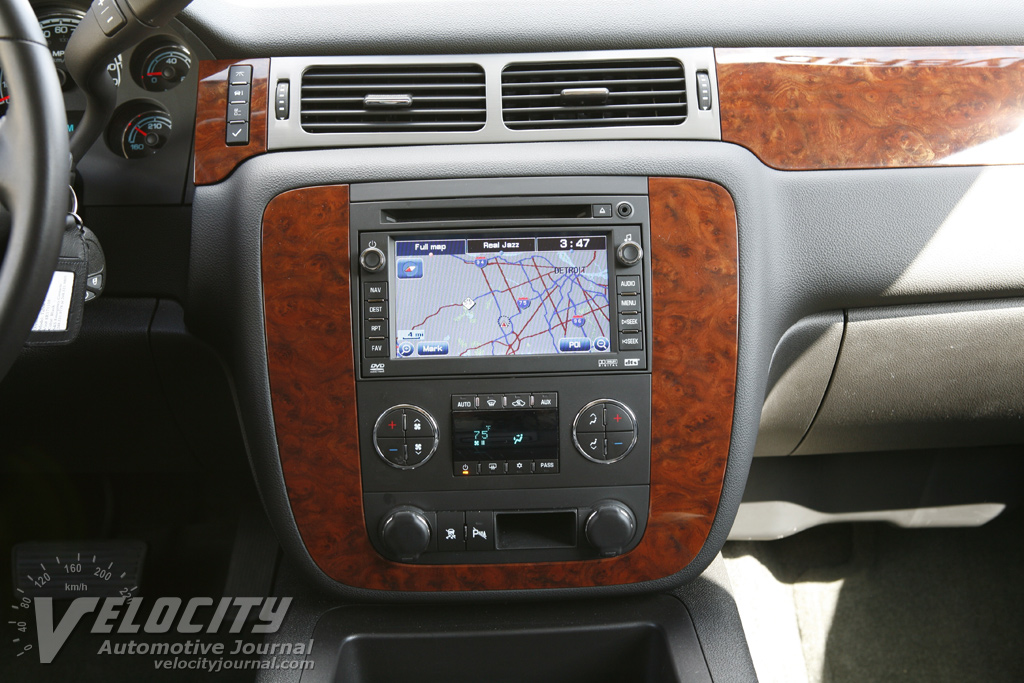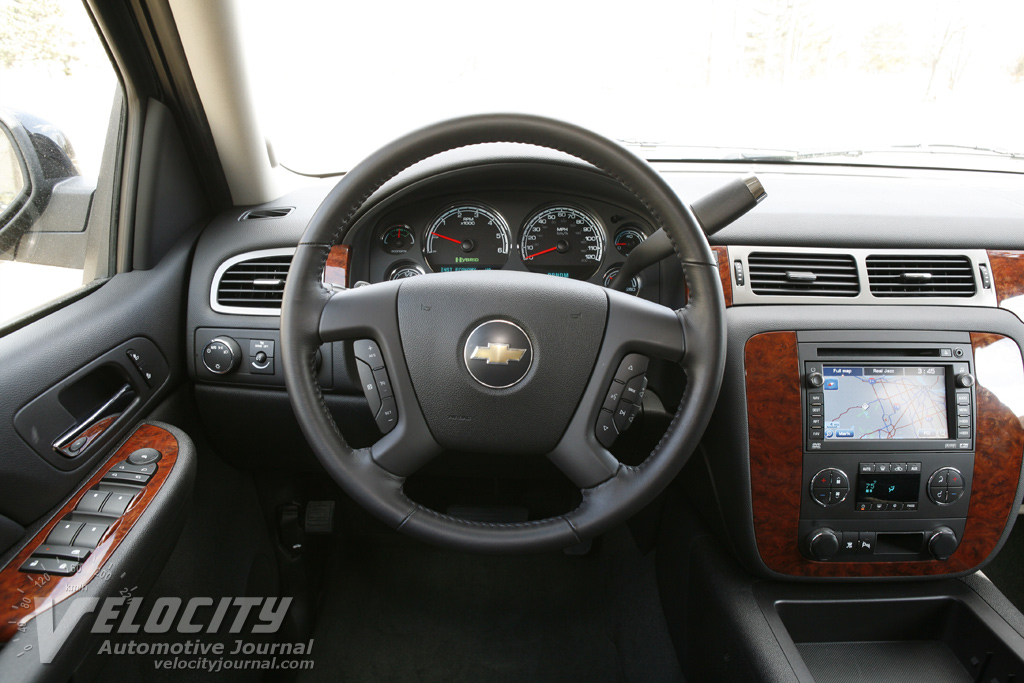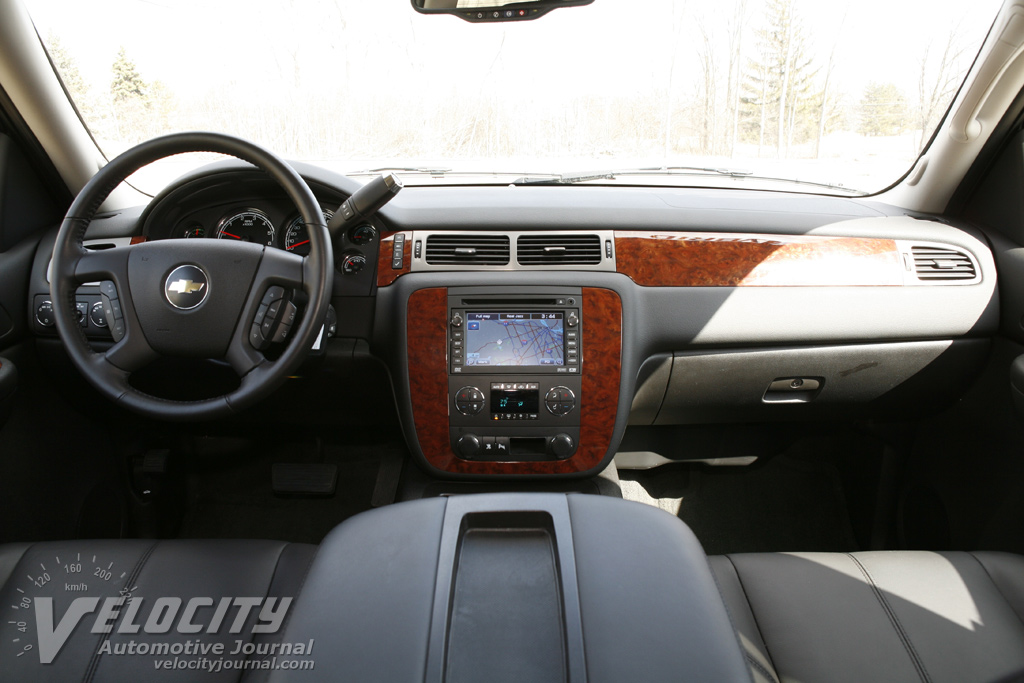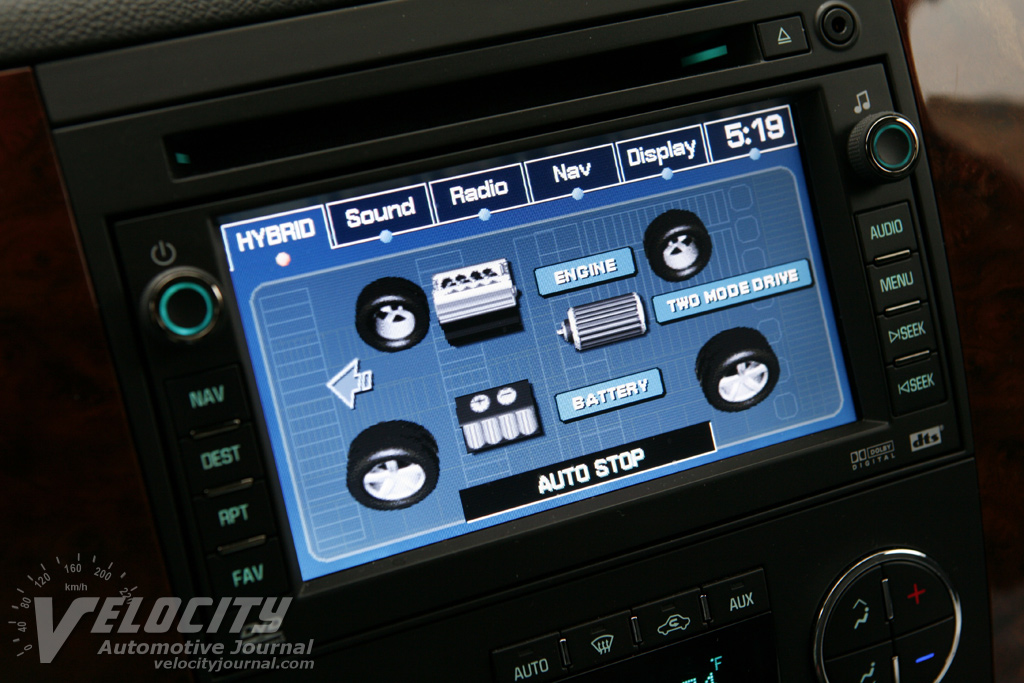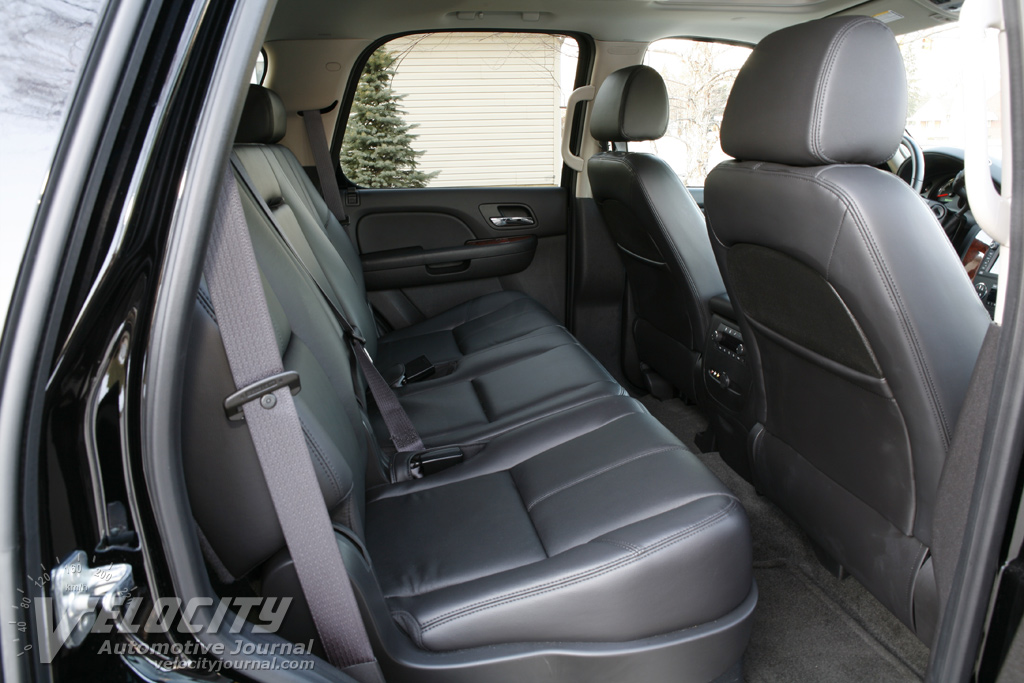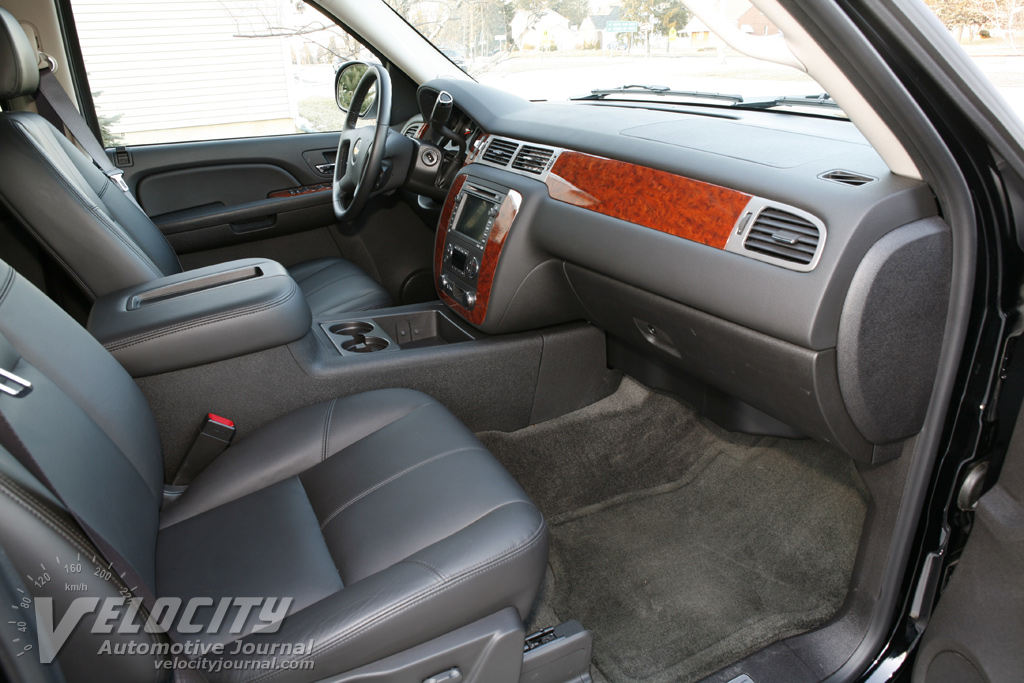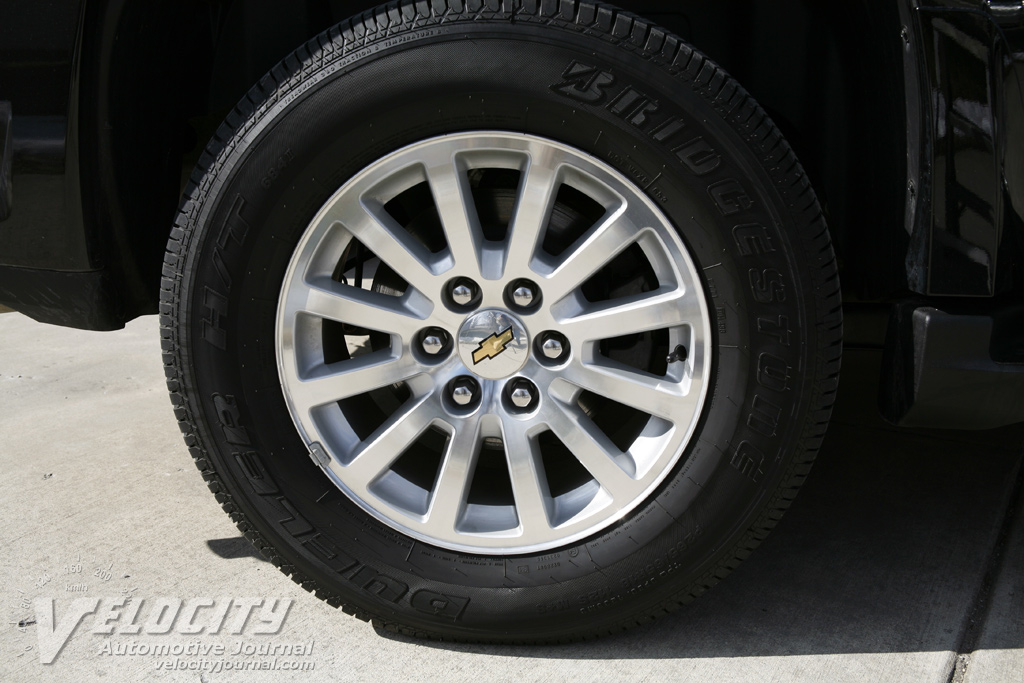2008 Chevrolet Tahoe Hybrid
03/28/2008
Shahed Hussain
The newly redesigned Tahoe sets the standard for non-luxury full-size SUVs, with a combination of style, utility, and value unmatched by its rivals. Unsurprisingly, Chevy customers have consistently made the Tahoe the best-selling truck in its segment. GM recently expanded the Tahoe model lineup with a 2-Mode Hybrid, a first in its segment. The Tahoe Hybrid mates a 6.0L V-8, dual electric motors, and a 300-volt battery pack into its powertrain. Arguably the most advanced system on the market, this SUV is a showcase for GM's engineering expertise.
Chevrolet positions the Hybrid model at the top of its Tahoe lineup, with a base price of $50,490 (2WD) or $53,490 (4WD). We tested a black Tahoe Hybrid 4WD with a dark gray leather interior. The few options available include a DVD entertainment system and an engine block heater. Essentially, the Hybrid model is equipped like a slightly de-contented Tahoe LTZ.
Due to the additional mass of the battery pack, electric motors and other components, the Tahoe Hybrid uses aluminum for the hood, rear hatch, and front bumper beam. Special lighter aluminum wheels shave off more weight. The front fascia and rear fascias have been redesigned to reduce drag, while the roof rack and running boards were modified to improve airflow. Other areas of mass reduction include lighter front seats and elimination of the spare tire and jack. The end result is a Tahoe Hybrid 4WD that weighs in at 5,835 lbs., slightly more than the 5,537 lbs. curb weight of a standard Tahoe 4WD.
To ensure that that everyone knows that this is no ordinary Tahoe, GM added badges and stickers all over the Tahoe Hybrid: green "H" badges near the A-pillar, C-pillar, and the lower rear hatch, as well as stickers on the doors and the rear hatch glass. As a practical consideration, the "Hybrid" stickers are vulnerable to damage from ice scrapers or in car washes; GM advises owners who wish to remove the stickers to see their dealer.
The Tahoe Hybrid's instrument panel differs slightly from that of the standard model in that the tachometer includes an "Auto Stop" mode, and an analog economy gauge. The economy gauge indicates when the powertrain operates in its most efficient mode. The economy gauge encourages gentle braking, so that the regenerative braking system can recoup energy normally lost to heat. In addition, leisurely acceleration allows the electric motors to operate at their most efficient range. The trip computer display also indicates when the engine is operating in V-8 or V-4 mode. For additional information, the multi-function dash-mounted LCD shows a graphic display of the hybrid power flow from the engine, battery pack, and the electric motors. The touchscreen display also controls the superb Bose audio and navigation systems. The standard rearview camera displays a wide-angle view behind the vehicle through the LCD, especially useful at night or when parking.
Aside from the gauges, the interior is essentially identical to other Tahoes. Although the dash plastics are mostly grained hard plastics, the material quality is above average. Plastic wood trim spans across the center console, dashboard and door panels. The leather-wrapped steering wheel has integrated audio and cruise controls on the spokes. An optional overhead DVD entertainment system includes two sets of wireless headphones. Second-row passengers can access A/V inputs, a 12V power outlet, as well as audio and climate controls behind the center console.
To reduce weight, the Tahoe Hybrid is equipped with special lighter front seats. The driver's seat has 6-way power controls, and both front seats are heated. Despite the flat bolsters, the seats are comfortable and supportive. Second-row passengers have adequate legroom, although occupants taller than 6 ft. will find headroom limited. A shallow footwell relegates the third-row seats to shorter adults or children; the knees-up seating position quickly becomes uncomfortable. These seats can be removed to reveal a nearly flat load floor; or both the third-row and second-row seats will fold down for longer cargo.
The Tahoe has exemplary ride and handling for a large SUV, especially considering its solid rear axle. Front suspension duties are handled by an independent coil spring/dampers setup; the rear 5-link solid axle is suspended via coils springs/ dampers. Dive and squat are kept in check even under hard acceleration or braking. Over gravel roads, the suspension remains composed, without undue axle hop. On the highway, the suspension keeps this beefy SUV stable up to about 75 MPH, but venture any faster, and the Tahoe reminds the driver of its nearly three-ton mass.
As is increasingly common, the Tahoe's rack-and-pinion steering is electrically assisted. GM claims up to a 0.5 MPG fuel consumption improvement, as it eliminates the parasitic losses of a conventional hydraulic system. Despite the variable assist, steering feedback is minimal and road textures are almost completely filtered out. Then again, the Tahoe isn't exactly intended for driving enthusiasts, so we doubt most owners will mind the low-effort steering. Around town, the light steering and quick ratio (3.0 turns lock-to-lock) ensure that the Tahoe almost seems nimble. At freeway speeds of 75-80 MPH, the overly boosted steering combined with the P265/65R18 Bridgestone Dueler H/T tires cause the Tahoe to wander slightly.
To conserve energy, the Tahoe Hybrid combines conventional 4-wheel disc brakes with regenerative braking. If the driver slows down gently, the electric motors function as generators to charge the battery pack. For hard braking, the disc brakes engage to dissipate the excess energy that cannot be absorbed by the electric motors. We used the economy gauge on the instrument panel to judge how to maximize regenerative braking to recharge the battery pack.
GM poured its powertrain expertise into the Tahoe Hybrid: a nearly seamless integration of a 6.0L V-8, two 60 kW electric motors, three planetary gearsets, and four hydraulic wet clutches. The V-8 and electric motors both funnel power via a 4-speed automatic transmission. The hydraulic clutches can engage any of the four gear ratios, depending on speed and load conditions. GM claims that using any of the different gear ratios with the electric motors improves efficiency, as they can then operate in their optimal RPM range. The 300V nickel-metal hydride battery pack that powers the electric motors resides unobtrusively under the second row seats. The entire powertrain is controlled by GM's Hybrid Optimizing System (HOS), which continuously monitors the powertrain to deliver the desired combination of power and fuel efficiency.
The 6.0L V-8 includes Active Fuel Management (a technology shared with other GM V-8 engines), which operates in a V-4 mode under light load conditions. A trip computer display screen shows when the engine is working on four cylinders. GM also adopted the Atkinson Cycle for the V-8; this variant of the Otto Cycle (used by most gasoline-powered vehicles) delays the closing of the intake valve, to reduce pumping losses (wasted energy). Using cylinder heads from the high output 5.3L V-8, the 6.0L engine achieves 332-bhp @ 5,100 RPM, with 367 lb.-ft. of torque at 4,100 RPM. In contrast, the non-hybrid Tahoe's optional 6.0L V-8 produces 320-bhp @ 5,200 RPM and 360 lb.-ft. @ 4,000 RPM.
Subjectively, the 2-Mode Hybrid system endows the Tahoe with a split personality: ease on the throttle, and the Chevy oozes forward with a faint turbine-like hum of the electric motors, while the V-8 remains dormant. The Tahoe will accelerate up to 30-35 MPH in full electric mode; above about 35 MPH, the gasoline engine takes over propulsion duties. If the driver mashes the gas pedal, the full force of the 6.0L V-8 and the dual electric motors simultaneously thrust the Tahoe forward with surprising verve.
GM rates the Tahoe Hybrid 4WD model with a 6,000 lbs. towing capacity, which is 2,200 lbs. less than an equivalent standard Tahoe. Payload is also reduced to 1,380 lbs. (max.) compared to 1,776 lbs. (max.) for the non-hybrid model.
According to the EPA, the Tahoe Hybrid 4WD is rated at 20/20 MPG (city/hwy.). For comparison, a 4WD Tahoe equipped with the 320-bhp 5.3L V-8 gets 14/19 MPG (city/hwy.). Our test vehicle, with just over 4,000 miles on the odometer, got about 17.5 MPG on the highway cruising. We would expect some reduction in fuel consumption once full broken-in, but we're not sure if most owners will consistently get the EPA highway mileage. We were not able to obtain an accurate reading for city driving fuel economy, but our informal monitoring of the Tahoe's urban fuel economy seems consistent with the EPA estimate.
A quick calculation of the Tahoe Hybrid's fuel economy vs. a non-hybrid Tahoe is revealing. If an owner drives 15,000 miles per year exclusively in a low speed city environment, and averages 20 MPG, the Tahoe Hybrid will save about $1125 per year in gasoline costs (assuming $3.50/gal. for regular unleaded). While this seems like a substantial reduction in fuel costs, a more common 50/50 mix of city and highway driving would cut fuel savings in half. From a fuel savings perspective, the Tahoe Hybrid makes limited economic sense.
Ultimately, the Tahoe Hybrid is a paradox; it offers improved city fuel economy, but no real advantage on the highway. Towing and cargo capacity for the Tahoe Hybrid are reduced, so owners who frequently haul cargo or trailers would be better served by a conventional Tahoe. It appears that the Tahoe Hybrid makes the most sense for customers who drive primarily in an urban environment, where the hybrid powertrain is most effective. Alternatively, some buyers may want a full-size SUV, yet maintain some "green" credibility; for them the Tahoe Hybrid is the perfect vehicle.

